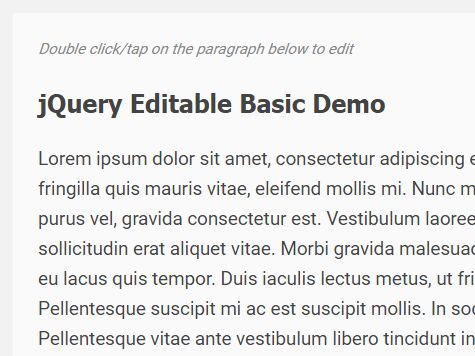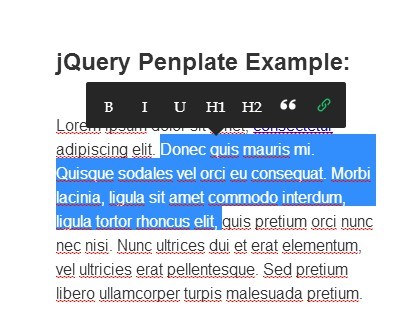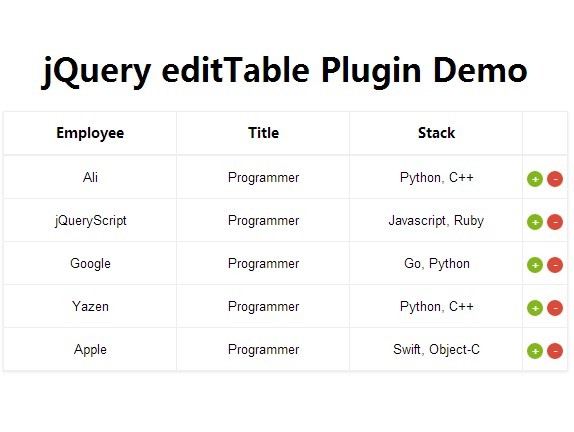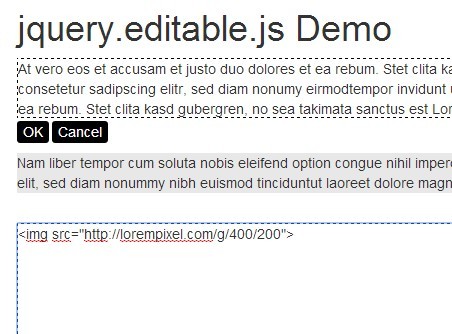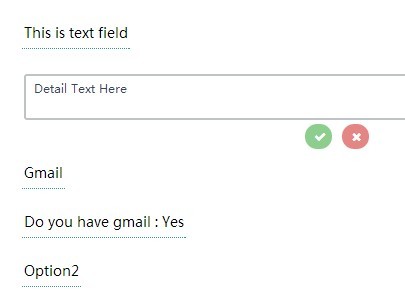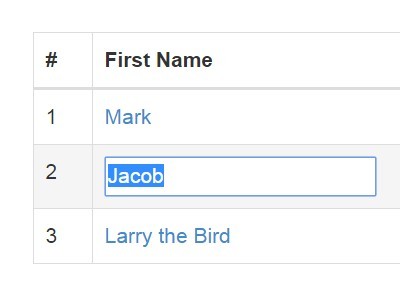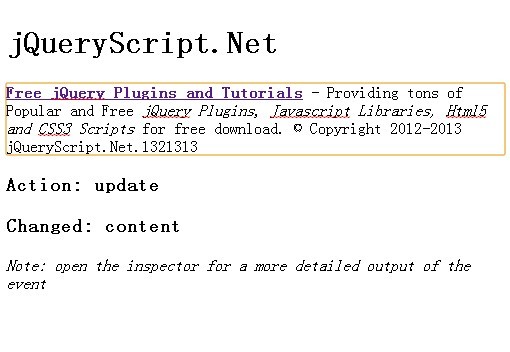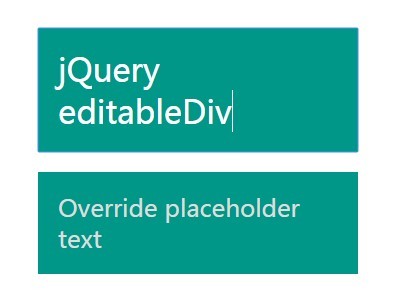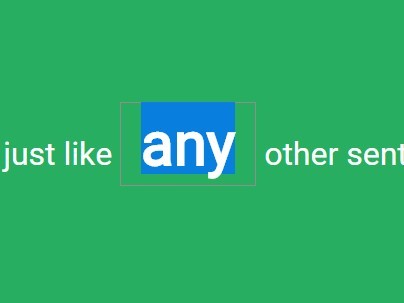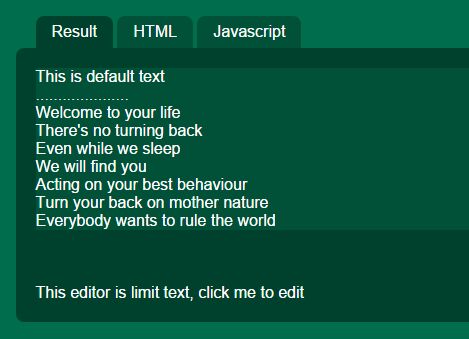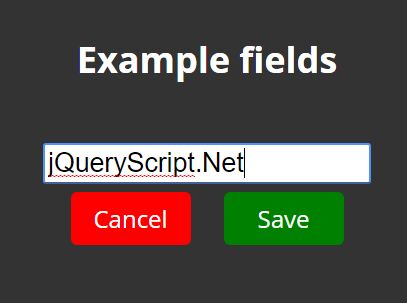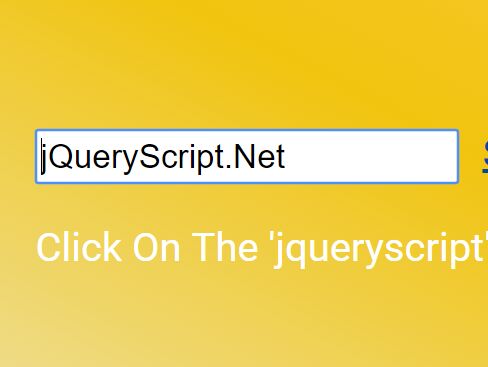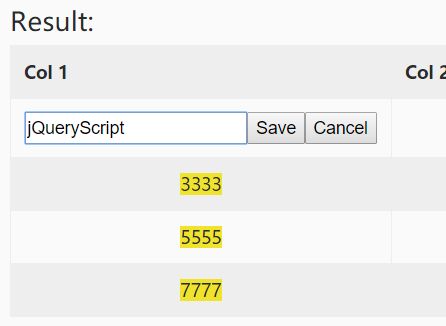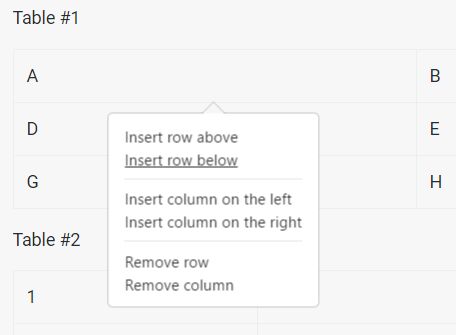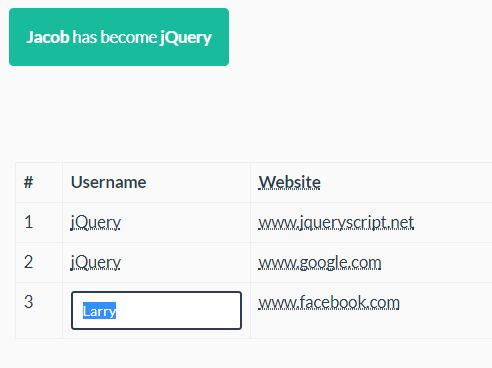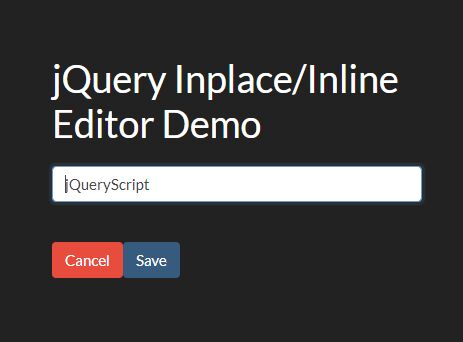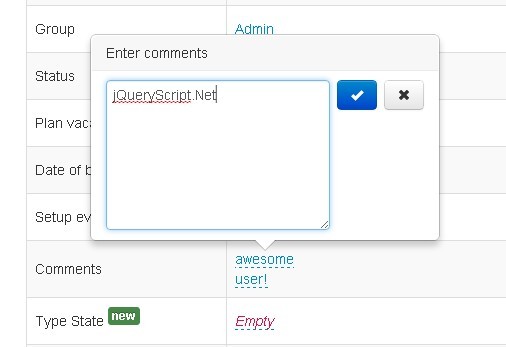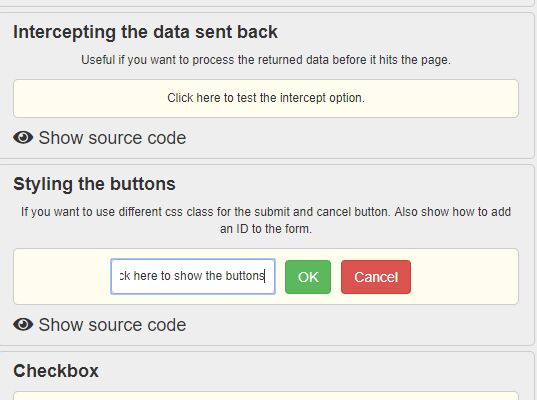jquery.editable
This plugin makes it possible to edit the content of an element simply by double clicking on it. What sets this plugin aside from other similar plugins is that the editable area won't look like your plain old boring textarea or input field. Instead, it will look as if you're editing the actually page.
Live example can be viewed here
How does it work?
Double click on an element and it turns into a textarea. The content of the element is now displayed in the textarea. But it will not look like a textarea, the text will have the same styling as it had before it was turned into an editor. When you're done editing all you have to do is to click some where outside the textarea and the content will be added to the DOM. You can toggle the size of the font by pressing the keys cmd + ↑ or cmd + ↓ while editing the content (ctrl-key instead of cmd if you're on windows). If you don't want to use a textarea as editor you can integrate jQuery editable with tinyMCE.
Code examples
// Make the element editable by double clicking on it $('#some-element').editable(); // There are some options you can configure when initiating // the editable feature as well as a callback function that // will be called when textarea gets blurred. $('#some-element').editable({ touch : true, // Whether or not to support touch (default true) lineBreaks : true, // Whether or not to convert \n to <br /> (default true) toggleFontSize : true, // Whether or not it should be possible to change font size (default true), closeOnEnter : false, // Whether or not pressing the enter key should close the editor (default false) event : 'click', // The event that triggers the editor (default dblclick) tinyMCE : false, // Integrate with tinyMCE by settings this option to true or an object containing your tinyMCE configuration emptyMessage : '<em>Please write something.</em>', // HTML that will be added to the editable element in case it gets empty (default false) callback : function( data ) { // Callback that will be called once the editor is blurred if( data.content ) { // Content has changed... } if( data.fontSize ) { // the font size has changed } // data.$el gives you a reference to the element that was edited data.$el.effect('blink'); } }); // You can use $.is() to tell whether or not an element is editable or at // the moment being edited var $elem = $('#some-element'); if( $elem.is(':editing') ) { // It's being edited right now, lets do stuff... } if( $elem.is(':editable') ) { // It's editable, lets do stuff... } // Call "open" to programatically turn an editable element into an editor $('#some-element').editable('open'); // Call "close" to programatically close the editor for an element // that's currently being edited $('#some-element').editable('close'); // Call "destroy" to remove the possibility to edit an element $('#some-element').editable('destroy'); // Binding an event listener that's triggered when the // element gets edited $('#some-element').on('edit', function(event, $editor) { }); The callback function
The first argument of the callback function is an object containing the following properties:
- content — Either false or the new content if the content was changed (this may contain HTML)
- fontSize — Either false or the new font size, if changed.
- $el - Reference to the element (jQuery) that was edited
Code example
$('.editable-area').editable(function(data) { if( data.text ) { $('input[name="' +$(this).attr('data-input')+'_text"]').val(data.text); } if( data.fontSize ) { $('input[name="' +$(this).attr('data-input')+'_fontsize"]').val(data.fontSize); } });Integrate plugin with tinyMCE
Since version 1.3.1 it's possible to integrate this plugin with tinyMCE.
<div id="my-editable"> <p>Lorem te ipsum...</p> </div> <script src="tinymce/jscript/tinymce.js"></script> <script src="http://ajax.googleapis.com/ajax/libs/jquery/1.8.3/jquery.min.js"></script> <script src="js/jquery.editable.min.js"></script> <script> $('#my-ediable').editable({ tinyMCE : { plugins : 'autolink,lists,spellchecker', skin : 'o2k7' // what ever tinyMCE configuration that you want }, callback : function(data) { // ... } }); </script>